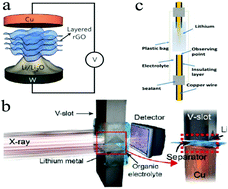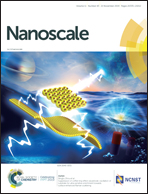Probing the dynamic evolution of lithium dendrites: a review of in situ/operando characterization for lithium metallic batteries
Abstract
During the operation of lithium metal batteries, the direct observation of the evolving characteristics of the deposited lithium is rather challenging in consideration of the requirements for the fast-tracking and high spatial resolution of the signals within native organic electrolytes. However, the weak scattering of electrons and X-rays with low-atomic-number lithium deteriorates the spectral resolution of the signals. Therefore, this mini-review compares various influencing factors that determine the lithium nucleation process based on electrochemical performance evaluations, including the artificial protective layer, electrolyte formulation, lithiophilic sites and hierarchies of the substrate; additionally, the possibility of the dynamic observations of chemical, electronic, and geometric changes during the operation of metallic batteries is exhibited. For each category of the technique, a brief account of the advancements of the characterizing equipment is followed with novel cell designs. Finally, the prospects that advance the precise description of the lithium nucleation process are summarized. This mini-review highlights the mitigating strategies of lithium dendrites at molecular, electrode, and device levels and summarizes the state-of-the-art in operando techniques, thereby promoting the future design of metallic battery systems.

- This article is part of the themed collection: Recent Review Articles


 Please wait while we load your content...
Please wait while we load your content...